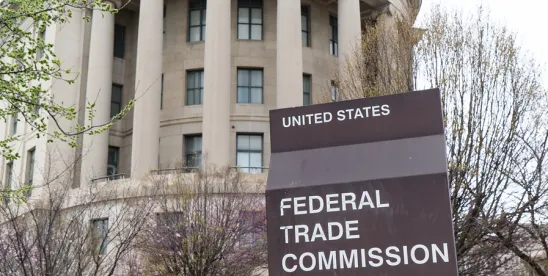I recently moderated a panel of legal experts on complying with multijurisdictional export and trade controls who provided an overview of the domestic and international regulatory environment to an audience of corporate counsel from companies of all sizes, ranging from the largest multinationals to emerging companies just beginning to expand in the global marketplace. It is an important and timely topic given the tension and uncertainty currently at play in the closely-connected geo-political environment in which all companies are doing business.
The litany of potential issues relating to export and other trade controls can seem overwhelming to even experienced corporate counsel when dealing with them for the first time.
The largest companies have their own export and trade control experts in-house, but even the in-house experts have to be on their toes to keep track of all the issues, given the complexity of overlapping regulatory environments. It is a challenge for all in-house counsel to deal with the multitude of national and international regulatory regimes as their company develops new products and prepares to enter new markets.
The main message that I have to deliver to the corporate counsel audience hasn’t changed much over the more than 30 years that I’ve been doing this work. I advise corporate counsel not to worry about every possible issue in considering the potential risks of export controls. Fortunately, any one business doesn’t have to address all risks. Keep your focus narrow and concentrate on your own company’s products and services and the specific markets where they are sold when developing your export control compliance program.
The issues will likely still be complex, but at the end of the day you will have developed a finite set of steps to mitigate risk and ensure compliance.
Knowing which countries’ laws apply to your company’s business is a critical first step. All trading nations have export control laws and regulations. Of particular concern to most clients are the regulatory schemes of the biggest players, like the US, countries in the European Union and China, but other countries have their own regimes and there are also international agreements that govern the export control of arms, biological and chemical items, missile technology, civil nuclear items, and other products where there may be restrictions in place.
US export controls govern the release of strategically important technologies and products in order to enhance national security and advance national policies. The Export Controls Act and the Export Administration Regulations (EAR) are at the center of our national and regulatory structure in this area, along with the Arms Export Control Act and International Traffic in Arms Regulations (ITAR).
But identifying laws and regulations is just the starting point. Understanding how these laws are enforced is equally important. As anyone following the news knows, the rules confronting companies doing business globally are currently subject to an increasing interplay between policy and politics. The use of sanctions and tariffs as levers to accomplish trade policy goals adds another dimension to the global regulatory landscape. The simmering trade war with China is, of course, the primary example of this trend.
So how do you and your company learn to swim in this uncertain and changing environment? As mentioned previously, an effective compliance program will depend on a variety of factors unique to the company and the circumstances of its business – factors like size, technologies, location, and workforce. One size definitely does not fit all companies when it comes to export control compliance.
"...a successful export compliance program depends upon conducting a realistic risk assessment that identifies your company’s unique risks and then structuring a program that credibly controls for those risks."
– Jim Kearney
Sometimes the temptation is to create export compliance plans that attempt to address all possible risks, losing sight of the actual risks affecting a particular business. But, each company’s risk profile and solutions to reduce risks will be different. Smaller companies, in particular, can create problems for themselves while developing their compliance programs if they mirror big multinationals and attempt to address every issue. Rather, a successful export compliance program depends upon conducting a realistic risk assessment that identifies your company’s unique risks and then structuring a program that credibly controls for those risks. If and when federal authorities examine your program, they will be looking at whether it addresses your company’s particular risk profile, and therefore is reasonably designed to prevent violations and uncover violations if they do occur. They will be looking for a program that makes sense for you, so an unnecessarily complex program addressing risks your company will not face will only serve to raise red flags in the eyes of the enforcement team. When I give clients my “Compliance 101” talk I suggest starting with an audit of the business – what are you selling and where are you selling it – and building from there, constructing a matrix of the regulations (national and international) that relate to the particular products you sell and the particular countries in which you do business. The idea is to focus on what you need to do to be a reasonably compliant business. As part of the process, you will need to identify who in the business has acted or should act as focal points for the compliance program, who needs to be trained, and what kind of written policies are needed to provide consistent guidance across your entire organization.
Risk assessment should be a regular and ongoing commitment; changes in business activities and strategies will cause changes in risk profiles that may require adjusting existing policies and procedures. So, scalability of your compliance program is a must. You will need to build flexibility into your program so that you can reassess and modify your efforts to account for new products and technology as they come along.
The end product of this effort will hopefully be a practical, relevant program for complying with all the rules and regulations relating to the export and trade controls that directly impact your business.




 />i
/>i
